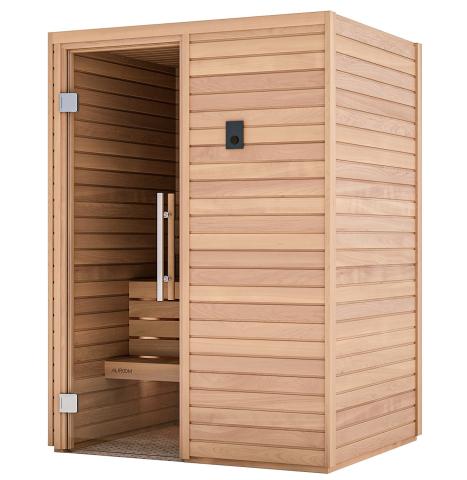The Only Guide to Traditional Sauna
The Only Guide to Traditional Sauna
Blog Article
Facts About Traditional Sauna Uncovered
Table of ContentsSome Known Details About Traditional Sauna Excitement About Traditional SaunaA Biased View of Traditional SaunaWhat Does Traditional Sauna Mean?The Best Guide To Traditional Sauna
Power cost savings is one thing to consider for individuals that intend on utilizing their sauna often. For a standard sauna, bathers normally need to await 30-40 mins for the room to pre-heat before entering. Infrared saunas, on the various other hand, usually reach their optimal temperature level in around 15 minutes.That means that in an infrared sauna, bathers can begin appreciating their sauna promptly. One difference between the 2 types of sauna that is typically forgotten is the social experience.

Traditional Sauna Fundamentals Explained

Attempt a sauna today and find a few of the impressive advantages on your own!.

Aspects such as heat resistance, desired degree of detoxification, and total health must be thought about when making a decision which type of sauna to make use of. Infrared saunas are a type of sauna that make use of infrared light to heat up the body straight, as opposed to warming the air around the body like conventional saunas.
Some Known Facts About Traditional Sauna.
The temperature level in an infrared sauna is usually less than in a typical sauna, with temperatures ranging from 120F to 150F. Infrared saunas provide a variety of benefits that make them an appealing alternative for those aiming to boost their health and wellness. A few of the benefits of infrared saunas include: Infrared saunas utilize lower temperature levels than traditional saunas, which can make them more comfortable for those who discover heats tough to endure.
This can assist to promote relaxation, decrease muscle tension, and alleviate pain. Some specialists recommend that infrared saunas may use advantages for comforting an aching throat. Infrared saunas have been shown to aid additional resources the body remove toxic substances with sweating. Sweating can also aid to boost skin health and wellness by eliminating impurities and dead skin cells.
The warm produced by infrared saunas can aid to enhance blood circulation and improve blood circulation. Infrared saunas have been revealed to assist lower tension and advertise relaxation.
With their reduced temperatures, deep penetration, and variety of health advantages, infrared saunas are a wonderful means to relax, loosen up, and improve your general wellness. Conventional completely dry saunas have been around for centuries and are still popular today. They are commonly heated with timber, gas, or electrical power and have reduced humidity levels.
The Ultimate Guide To Traditional Sauna
There are several advantages to using a typical dry sauna. Right here are a couple Continue of: Leisure: The heat and reduced moisture in traditional dry saunas can help relax the muscles and decrease anxiety degrees. Detoxing: Sweating in a sauna can help eliminate toxic substances from the body, which can boost general wellness.
When it pertains to saunas, there are two main kinds of heating techniques: standard and infrared. Typical saunas use warmed air to warm the body, while infrared saunas utilize infrared radiation to permeate the skin and warmth the body from within. One of the main distinctions between the 2 techniques is the kind of warm they produce.
Typical saunas heat up the air, which then warms the body with convection. Infrared saunas, on the other hand, warmth the body straight through radiation.
In regards to energy efficiency, infrared saunas are usually a lot more efficient than typical saunas due to the fact that they require much less power to operate. They also warm up faster, so they can be utilized for shorter sessions. Traditional Sauna. When it involves the results on the body, both kinds of saunas have been shown to have advantages
What Does Traditional Sauna Mean?
Infrared saunas have actually been shown to have similar advantages, along with potentially aiding with detoxing, skin health, and immune feature. Overall, the selection between a traditional or infrared sauna boils down to personal preference and private needs. Conventional saunas might be much better for those who like greater temperatures and a much more extreme sweat response, while infrared saunas may be much better for those that desire a more gentle and effective warm therapy.
Both types of saunas use special advantages and disadvantages that ought to be thought about prior to choosing. The choice between an infrared sauna and a conventional dry sauna mostly depends upon personal preference and the desired benefits. Those who prefer a more comfy, reduced temperature level environment might like an infrared sauna, while those that are trying to find extreme heat and a conventional sauna experience may prefer a traditional completely dry sauna.
Below are some safety and security pointers see this here to bear in mind when utilizing infrared and standard dry saunas:: Saunas can trigger excessive sweating, resulting in dehydration. It is crucial to consume a lot of water before, throughout, and after sauna sessions to remain hydrated.: It is suggested to restrict sauna sessions to 20-30 minutes to avoid overheating and dehydration.
Report this page